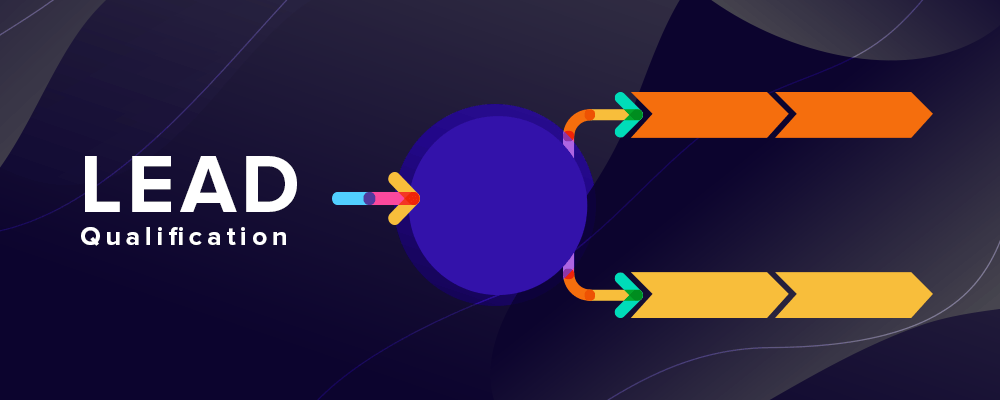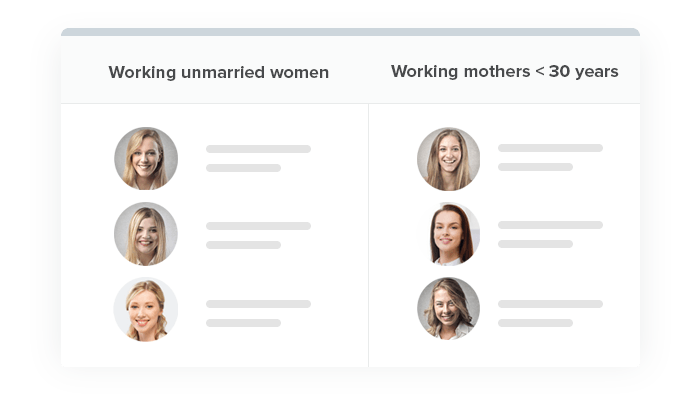
There’s no doubt about it: some leads are just better than others.
Which is why it makes sense to separate the bad from the good, from the great, to help you focus your efforts on the right people.
Enter lead qualification, a process that helps you separate qualified leads from the unqualified ones. Integrate’s Cost of Bad Leads report concluded that about 45% of leads weren’t marketable due to insufficient lead data, duplicate content, or other gaps.
(Source: https://www.integrate.com/blog/new-research-report-how-much-bad-leads-cost-you)
Imagine if you were to spend an equal amount of time and money on each of your leads – almost half of your time and resources would be wasted!
Lead qualification provides a way to mitigate the risk of pursuing bad leads so you can focus on your best opportunities and maximize your results. Here’s the abridged version of everything you need to know about lead segmentation.
What Is Lead Qualification?
Basically, lead qualification is the process in which you set certain quality criteria for your leads. And only when they meet these requirements salespeople consider them good enough to pursue. Which is why the process is also called as lead segmentation. It’s very effective in filtering out leads with missing data or duplicate content, which will waste your sales team’s time, without producing results.

That’s not to say you only respond to high-quality leads and ignore the rest. Sales can still be made from leads that aren’t as seemingly qualified as others, but you can prioritize the “hot” leads first and handle the others later. Hot leads tend to close faster, which means a shorter buying cycle and more time to focus on warming up your less qualified leads.
Use Cases for Lead Qualification
There are several ways you can qualify leads and sort the good ones from the substandard ones. A good lead qualification tool will help you expand the boundaries of what you consider a good lead.
For instance, LeadSquared’s Lead Qualification tool allows you to set your own criteria when determining lead quality, such as location and activities. In addition, you can create custom criteria to assign high scores to leads that meet your requirements. The best part is that you can set a quality score for your leads, which allows your sales team to understand how ‘good’ the lead is, at just a glance.
Take a look at the following common use cases to put lead qualification into perspective:
By Activity
Activity-based lead qualification is usually the most common way to segment your leads. For example, a user that reads one blog post on your website isn’t likely to be as qualified as a user that has subscribed to your email list.

Consider the types of activities your customers perform on your website, such as requesting information, reading blog articles, browsing product data, or signing up for a free trial. Then, determine which of these activities are most indicative of someone with the most potential of becoming a customer. You can then assign a priority score to the ones who have performed more desirable activities and call them first.
By Demographics
Every business has their own target audience. And most buyer personas are defined by a person’s demographics. In which case, segmenting leads by this information makes the most sense. For example, if you’re targeting women ages 25-55 and also has children, you’d want to reach out right away to anyone that fits that criteria.

Demographic information can include age, geographic location, gender, job title, budget, income, or other significant traits.
By Qualification
Leads can be broken down into three distinct categories:
- Sales-qualified leads
- Marketing-qualified leads
- Information-qualified leads

Top of the funnel leads are usually information-qualified. They surrendered their information in exchange for something, such as an ebook, whitepaper, or downloadable. They got what they came for and may or may not be interested in whatever else you have to offer.`
Marketing-qualified leads are those that responded to some form of marketing, such as an email campaign or Facebook ad. Information-qualified leads may become marketing-qualified leads through careful lead nurturing. They start discovering your company and what you can do for them to solve a problem.
Sales-qualified leads are the most qualified of the three. They’re in the decision-making stage, showing interest in what you’re offering. Signing up for free trials, demos, or consultations are characteristic of sales-qualified leads.
You can segment your leads based on these qualifications to shorten your buying cycles.
Also read: MQL vs SQL: Difference between them and how to convert more MQLs into SQLs.
How to Segment Leads for Maximum ROI
Lead qualification is largely an automated process. Once you set your specific criteria, your Lead Qualification software goes to work figuring out which leads give you your best opportunities for conversion.
Of course, this process can also be done manually. You could use forms that customers can fill out and use their responses to indicate whether they’re a good lead or not. But like other manual tasks, this is the more time-consuming way to filter your leads and may not be the most accurate.
LeadSquared offers Lead Qualification to help you identify key opportunities so you always know where to focus lead conversion resources. Sales teams are immediately alerted of high-quality leads and aren’t bogged down by junk leads that can steal valuable time and energy from the sales process.
Try LeadSquared free for 15 days and discover how it can help you turn leads into customers faster and more cost-effectively than what you’re doing now.






